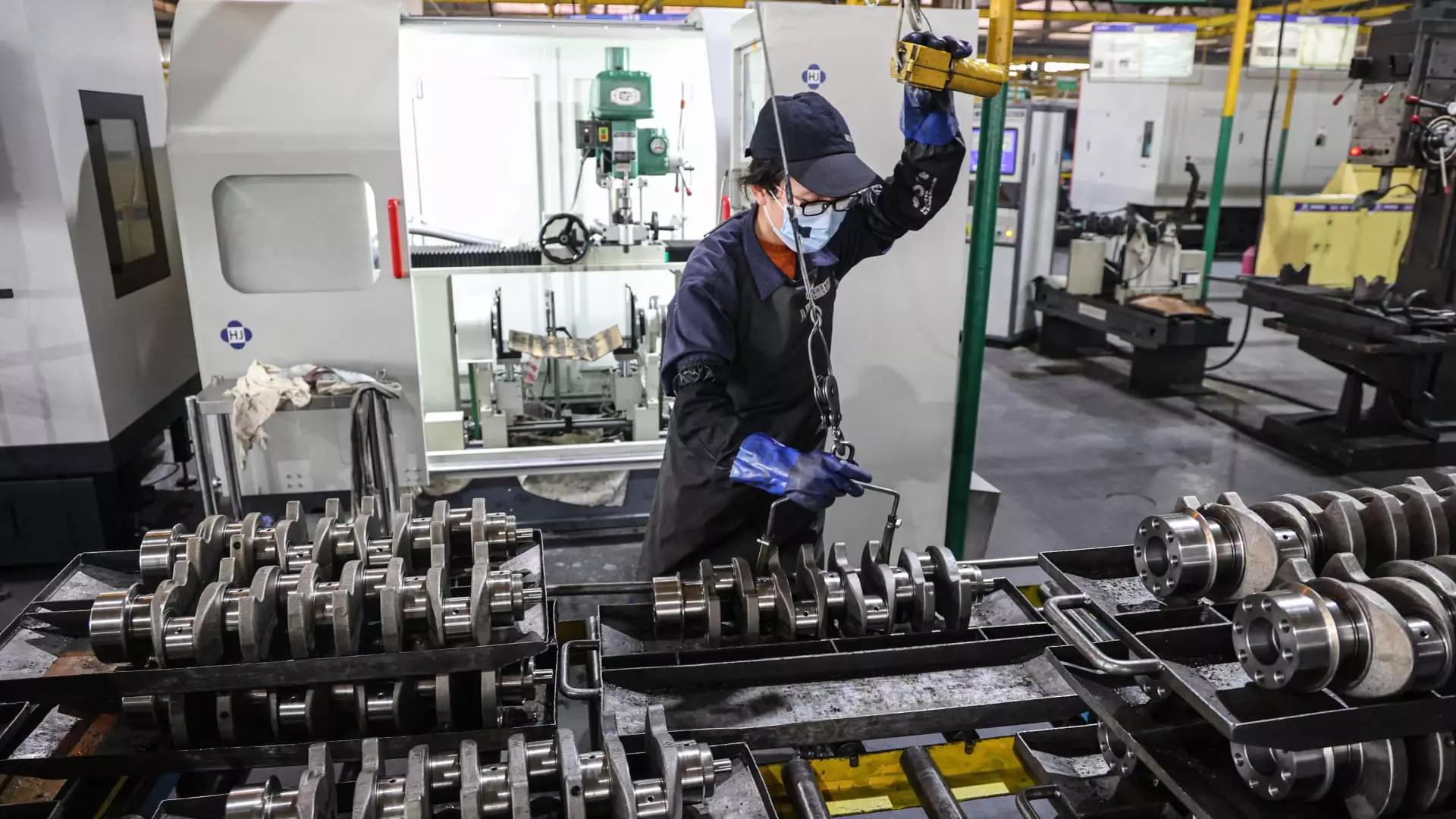In a landscape marred by tension and trade wars, China’s industrial sector has exhibited remarkable resilience. Reports indicate that industrial profits rose for a consecutive month in April, up 3% year-over-year. Such figures provide a glimmer of hope against the backdrop of U.S. tariffs aimed at crippling China’s economic ascendancy. It’s essential to analyze whether these gains are indeed a sign of recovery or merely a fleeting victory in a broader struggle against an array of economic pressures.
Consider the backdrop: U.S. tariffs soaring to an alarming 145% last month and a deeply entrenched trade conflict threatening to spiral into a full-fledged economic war. With enduring deflationary pressures, one could expect the Chinese industrial sector to falter. Yet, here we see a contradictory narrative unfolding. Despite these punitive levies, certain segments such as high-tech manufacturing and equipment sectors are reporting significantly better earnings, demonstrating not only survival but a certain degree of thriving in adverse conditions.
A Mixed Bag of Winners and Losers
Beneath the surface, however, lies a complex scenario of uneven growth. While private enterprises and foreign-backed firms saw profit increments of 4.3% and 2.5%, respectively, state-owned enterprises faced a startling 4.4% decline in profits during the same period. This divergence raises crucial questions about the structural weaknesses embedded within China’s state-run systems. Are we witnessing a gradual transition where the engine of economic growth is shifting away from state-owned monopolies toward nimbleness and innovation offered by private firms?
Furthermore, the performance of the mining sector is a cause for concern, plummeting by nearly 27% in April. This decline starkly contrasts with the rising fortunes of industries linked to technology and services. One has to wonder if the behemoth of traditional industry is being outpaced by the faster, sleeker, and undoubtedly more adaptable high-tech industry. As the world moves towards a more digitized economy, the resilience of older, more cumbersome sectors raises questions about their future viability.
Tariff Turbulence: The Double-Edged Sword
The imposition of U.S. tariffs and China’s retaliatory measures have resulted in a trade standoff that can best be described as a double-edged sword. President Trump’s move to lower tariffs was supposedly a gesture of goodwill, triggered by complex negotiations in Geneva. As a result, U.S. tariffs on Chinese imports dropped to an unprecedented 51.1%, while Beijing’s levies on American goods remain significant at 32.6%. This reduction may bring a temporary sigh of relief to exporters but raises alarms about the long-term implications of such deals that hinge precariously on political whims.
The notion of a trade truce seems paradoxical when considering the persistent uncertainty surrounding international relations. China’s ability to reroute exports to other markets is notable, yet these traffic diversions cannot mask the underlying issues of demand and pricing volatility that cast a long shadow over growth. We must critically interrogate the sustainability of this rebounds amid an increasingly fragmented global trading system.
The Shadow of Domestic Demand
Despite the rebound in industrial profits, the sluggish growth of retail sales at just 5.1% signals an alarming supply-demand imbalance. The very muscle of economic vitality—consumer demand—is faltering. Addressing this issue should be paramount for policymakers. It remains clear that without substantial consumer spending, even optimistic industrial growth could lose its footing.
The consumer market in China, once seen as an unstoppable force, shows signs of fatigue. While the government has initiated various schemes to spur demand, such as incentivizing the trade-in of old electronics, the impact appears fleeting. The fact that the household appliances sector, benefiting from such efforts, saw a significant profit uptake of over 15% appears encouraging; however, one must question if this is a localized improvement or a harbinger of broader market adjustment.
As China casts a watchful eye towards its industrial sector amid ongoing challenges, identifying pathways to deeper recovery becomes essential. Structures must evolve to capture the innovations and efficiencies that private firms offer, while also reconciling the slower-moving machinery of state control. The crucial task ahead lies in navigating the complexities of domestic consumption, external pressures, and transformative industry needs without losing sight of the underlying economic disparities.


Leave a Reply